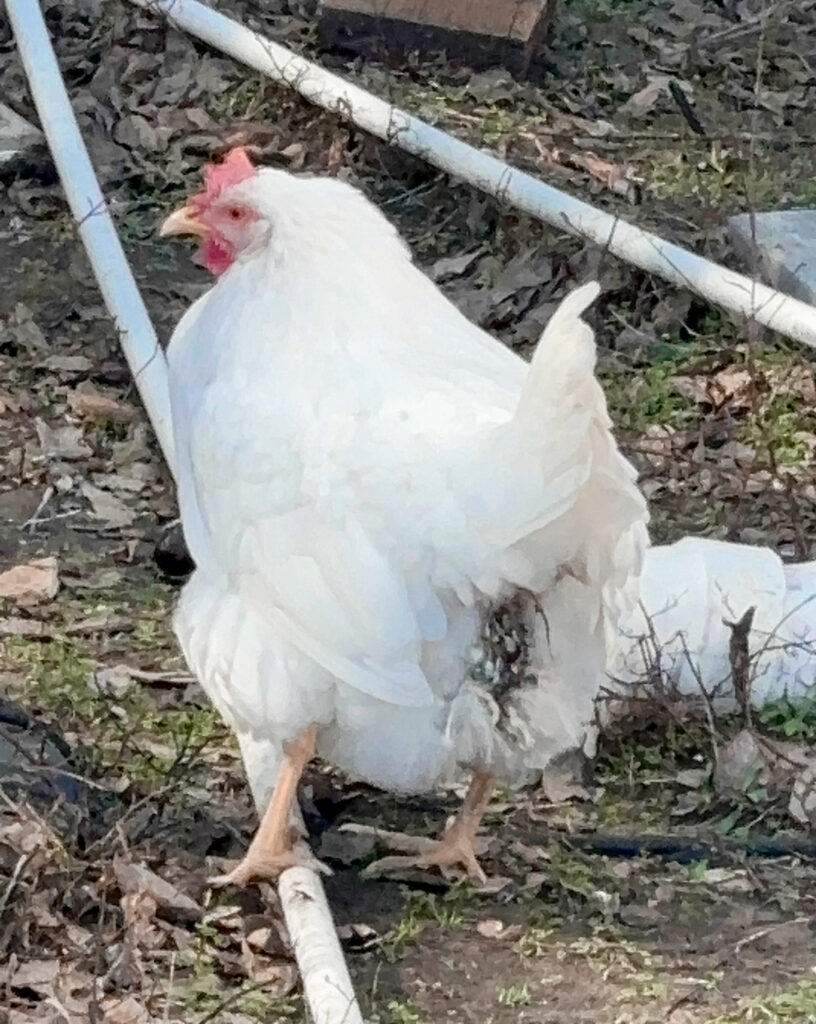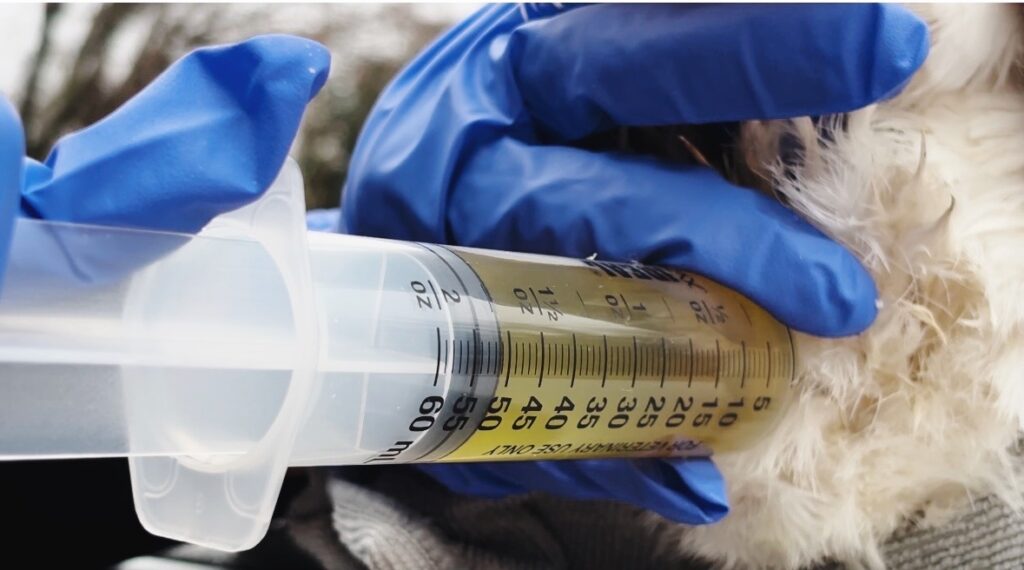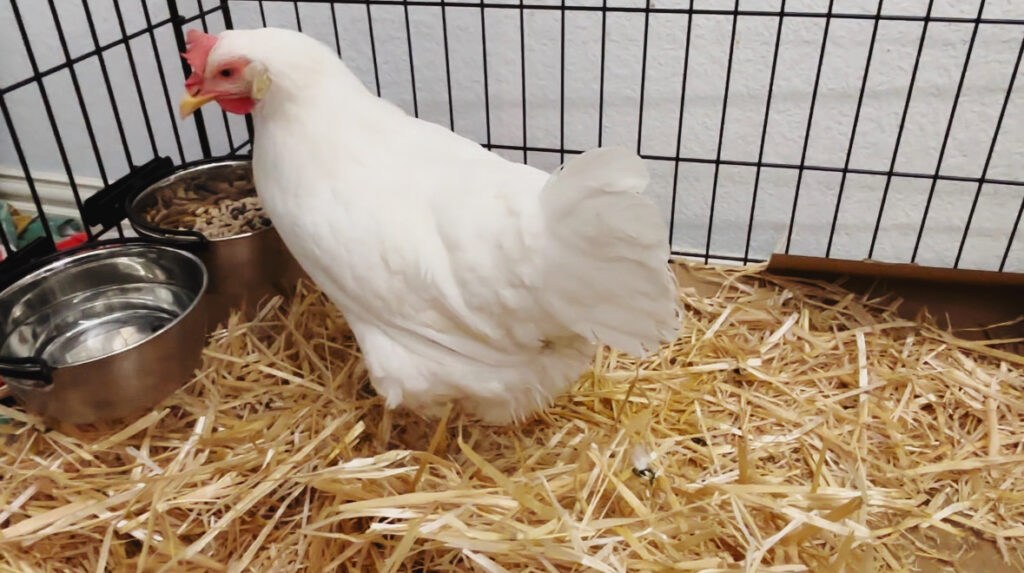How to Drain a Chicken with Ascites (Water Belly)
Purchasing items through the links provided in my blog is a way to help me earn a small commission at no extra cost to you. Thanks for your interest and support!
What is Ascites?
Ascites (uh-sai-teez) also commonly known as water belly is not a disease but a sign of heart failure. It is not contagious from one chicken to the next, so there is no need to separate your chicken.
When your chicken isn’t getting enough oxygen, the hearth will overwork itself and attempt to pump more than the usual amount of blood into the lungs to supply the chicken with the needed oxygen. This results in hypertension between the heart and the lungs (pulmonary hypertension syndrome).
Because the chicken’s lungs can’t handle the increased pressure, the heart works harder to overcome that pressure. The heart will then enlarge, thicken, and when it can no longer close the right heart valve; the blood will start backing up into the liver.
The liver as well can’t handle the pressure and leaks the liquid into the chicken’s abdominal cavity. This yellowish liquid will accumulate and result in what looks like a water belly.

Why do Chickens get Ascites?
There are many factors contributing to why a chicken will get ascites. It usually happens to broilers, chickens bred with the purpose of meat production. They are fed at a faster rate to fatten quickly and butcher so they commonly get ascites.
Other factors may contribute to ascites, one being old age. As the heart starts to be worn down, it can struggle to keep the chicken at it’s best health.
Is there a Cure?
Unfortunately, there is no cure to this condition. Their little heart will eventually give up and they will die. That time will vary depending on your chicken. I have had chickens with ascites die after just 3 to 6 months of noticing it.
Of coarse, once you notice they have ascites, you need to drain the liquid yourself, or take it to a vet for draining. Make sure you keep an eye on your chicken for the next draining session which is usually every 8-10 weeks. If you don’t do anything to help your chicken then they will possibly die quicker.
Eating too much protein in the first place is the most common reason why they probably got ascites. Make sure to keep them on a balanced diet. Yes, chickens are chickens and you can hardly control everything they eat or how much they eat but you can make some changes to how often or how much protein you make available to them.

Signs your Chicken has Ascites
- Your chicken’s activity level has decreased from the added weight and stress
- Your chicken has a swollen abdomen like a water ballon; hence the name water belly
- Your chicken has a poopy butt because the swollen abdomen prevents the poop from falling to the ground, hardens and stays stuck to it’s bottom
- Your chicken has a reduced appetite or stops eating and drinking water because of the pressure caused by the liquid in it’s abdominal cavity
- Your chicken is not able to roost because the added weight prevents it to fly or jump up easily
- Your chicken waddles when it walks, stands still, and just looks painful on it’s feet
- Your chicken has trouble breathing; it pants with it’s mouth open even during cool weather but especially in the summer
- Your chicken’s comb is pale or purple due to lack of oxygen

How to Drain your Chicken?
Materials Needed
- 60cc catheter tip syringe
- 20 gauge needle (3/4 inch)
- Disposable medical gloves
- Towel/s to lightly cover the chicken’s eyes, hold down the wings, and keep it’s feet from moving too much
- Hydrogen peroxide and cotton balls to disinfect the area being poked
- A bucket for soaking and cleaning the chicken’s bottom before or after draining depending on how much poop is stuck on it’d bottom
- A second person to help hold the chicken and keep it from moving
- A table for comfortably placing the chicken during the procedure (optional)
Step by Step
First, if your chicken has a very dirty bottom, you can start off by cleaning the poop off in a warm water bath. Use 1/2 cup of epsom salt only if doing this before the procedure. You don’t want the epsom salt to burn the broken skin. I like to use a tall flexible bucket to keep my chicken from flying out easily. Fill the bucket about 1-2 gallons with warm water (95 degrees Fahrenheit) and make sure you test the water to double check that it’s not too hot for your chicken. Carefully place your chicken in the water and with medical gloves on, use the warm water to soften any hard, stuck on poop that your chicken might have. This can take anywhere between 10-20 minutes.
Second, clean and prepare all your materials before you bring out the patient. Make sure you prepare a couple of cotton balls with hydrogen peroxide ahead of time for cleaning the area you will be draining from, but also in the case that the chicken moves and the needle slips out. You would need to clean the needle before reinserting to avoid infections. Also, prepare the syringe by attaching the needle to it and leave the safety cap on to avoid any accidents until it is time to use it.
Third, get your chicken and have your helper hold it with a towel. Add a towel over the wings and carefully over the head to cover it’s eyes. Make sure you let your chicken breathe during the procedure. Your chicken will most likely try to fly away, so putting a towel under its feet helps keep it from slipping. If you need to re-adjust the towel over the wings to get into a comfortable position, do it until your chicken is calm and not moving.
Fourth, locate the chicken’s vent and depending on how big your chicken’s water belly is, you will have to predict how far down and to the right you will have to puncture. For example, on a small breed white leghorn chicken, I only had to go about 1 1/2 to 2 inches down from the vent and about 2 to 2 1/2 inches to the right. Never puncture on the left side because you run the risk of hitting another organ and causing a bigger problem. This is also why I use a 3/4 inch needle. A chicken has a small body, so make sure not to use a long needle. That can be dangerous in accidentally hitting another organ.
Fifth, after carefully locating the area you will be puncturing, clean it with your hydrogen peroxide cotton ball. Take the safety cap off the needle and puncture the skin. Your chicken will try to move, so carefully start pulling the liquid out with the syringe until you fill up the tube. After removing the needle, your chicken will automatically keep leaking the yellowish liquid. In the case that your chicken starts bleeding, add pressure with a clean cotton ball until the bleeding stops. Now, let your chicken leak the rest of the fluid on its own. Do not forcefully take out too much at once, for this can shock your chicken and kill it.
Sixth, keep an eye on your chicken. You will notice changes in their activity level. They will not only walk more but walk better, their appetite will increase, they will begin to roost again, and begin to feel comfortable again.
Seventh, discard the ascitic liquid in the ground away from pets. Discard of any disposable items used and sanitize the rest.
What to Avoid
- Do not drain too much liquid out at once; let it leak on its own after the first 60cc syringe is full. Your chicken can go into shock and die!

What’s Next?
Because there is no cure to ascites, all we can do is our best as chicken keepers to keep them feeling comfortable. Draining their water belly is the first step to releasing that liquid pressure that not only is heavy to carry around but puts strain on their little feet and body, resulting in the inability to walk or eat normally.
Many of us can’t properly take all of our chickens to the vet, but we can be DIY chicken keepers during certain situations but of coarse not all. We can also learn a lot when our chickens’ get sick or if we have made any mistakes along our chicken keeping journey. Those mistakes help us learn how to prevent them in the first place and avoid repeating them by maintaining our chickens in good health.
Resources & Recommended Items
The Chicken Health Handbook, 2nd Edition: A Complete Guide to Maximizing Flock Health and Dealing with Disease 2nd Edition, Kindle Edition by Gail Dame
